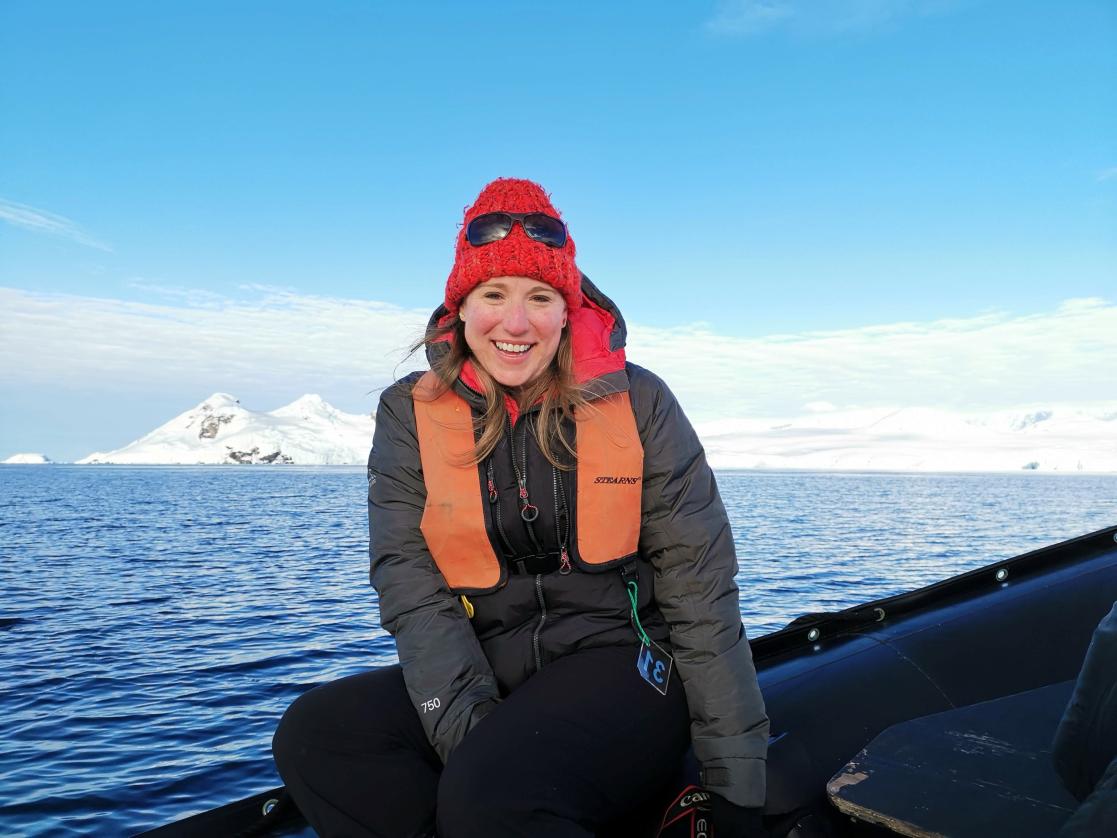Encouraging women and girls in science to follow their dreams

Over the past decades, the global community has made a lot of effort in inspiring and engaging women and girls in science.
The EU is committed to promoting gender equality in research and innovation. It is part of the Gender Equality Strategy for 2020-2025, which sets out the broader commitment to equality across all EU policies.
In 2021 the EU launched Women TechEU supporting women-led tech start-ups. The scheme offers first-class coaching and mentoring to female founders, as well as targeted funding to help take their business to the next level.
Horizon Europe also has a new eligibility criterion that research organisations applying for funding must have an actionable Gender Equality Plan, with a target for a gender balance of 50% in all Horizon Europe related decision-making bodies and evaluators.
Melania's Story...
Costa Rican Melania Guerra, recounts her journey to fulfil her childhood dream - a fusion of adventure and 'doing science' - and encourages more women to follow their aspirations.
"On my fifth birthday, I received a gift from my paternal grandfather that transformed my life. It was an illustrated book about Heinrich Schliemann, the German amateur archaeologist who followed the mythical clues from Homer to discover the legendary remains of Troy. As a child, I immediately connected with that desire to lead a life filled with adventures, breakthroughs and a legacy."

Searching for role models to emulate, I looked around my immediate world – and did not need to look far. A fellow Costa Rican, Dr. Franklin Chang-Diaz was just beginning his spectacular career as the first Latino in the NASA Astronaut Corps and Jacques Cousteau’s weekly TV show "The Blue Planet" opened my eyes to the underwater beauty of Costa Rica’s oceanic Cocos Island. Without fully realizing that their jobs were both rooted in science, and without the self-conscious sensibility about admiring men, I simply assumed that such ambitious and daring dreams were aspirational options for me as well.
Eventually I trained as a Mechanical Engineer and I experienced my own exploration adventures, doing oceanographic research for over 10 years in the Arctic. Frequently on this career path I have found myself as literally the only woman on my boat and have wondered: Why don’t other girls gravitate to or pursue the extraordinary life that is doing science?
My experience as one of only 4 women among 300 men in the School of Mechanical Engineering, or as the lone female crew member surrounded by 50 sailors, is not just an isolated anecdote. These data are consistent with evidence examined in scientific publications and international reports. In 2015, the United Nations declared February 11th as the International Day of Girls and Women in Science, in recognition of the critical, but oftentimes understated role that women play in science, with the aim of promoting a greater participation by women and equitable access for girls in STEM disciplines.
The imbalance in girls’ involvement in sciences is notorious from early childhood, despite the fact that the essential cognitive abilities are present, without any distinction, in both genders. Research suggests that girls' disadvantages in STEM arise rather as a cumulative result of socialization and education factors, which influence the way girls interact with family, friends, educators, and the community at large during vital stages of shaping their identity, core beliefs, behaviors and decisions.
So what can we do to attract more girls and young women into the scientific professions?
- Recognizing how the benefits of science surround us in daily life generates a greater curiosity and interest in them, by linking their desire to be creative and their ambition to impact society and the environment. In fact, in many regions of the world the “gender STEM gap” trends are not observed in the medical fields, as the connection to direct social impacts is broadly celebrated.
- Promote the qualities of a “growth mindset”, such as constant curiosity, willingness to fail, and resilience in the face of setbacks. Researchers from the University of Illinois (2016) documented that talking about great personalities in science in a way that they describes thems as "geniuses" or "brilliant" encourages a belief in the "fixed mindset", that is, it alludes to the fact that they were born with certain predetermined traits of character or intelligence. Women have been found to be especially under-represented in fields where innate talent is led to be believed as a primary requirement for success, especially if they are stereotyped as not possessing it.
- Become aware of subtle linguistic cues, for example using the phrase, “do science”. A study by researchers at Princeton and NYU (2019) reported that a call to “do science”, instead of asking girls to “become a scientist” - which somewhat implies they have to transform their identity - increased their perseverance and concentration in a scientific game.
- Providing diverse and representative female role models doubles girls' interest in science and technology, increases their self-confidence and their self-perception as competent in STEM fields, according to a study by Microsoft (2018).
While these strategies, along with others, can increase the recruitment of girls and young women into STEM subjects, they do not resolve the systematic barriers they still encounter along later career stages. Worrying statistics, such as that our academic publications are less frequently cited, that we receive less funding or prestigious awards, accentuate the gap even more markedly. At the highest levels, it is well known that only 24 Nobel Prizes in Physics, Chemistry or Medicine have been awarded to women, compared to 614 men. These factors about lack of recognition, in addition to gender inequalities in household responsibilities, generate a lethal combination leading to women deserting the scientific fields in much higher rates than men.
STEM careers propel humanity forward and build skills, like problem-solving and critical thinking, that will prove imperative for a competent workforce in the future. Attracting all existing talent, regardless of gender, is not just a consideration of equity, it is simply in our best collective interest. Faced with challenges that are too complex and interconnected, we cannot afford to dismiss 50% of the sources of solutions.
Although it may seem like a circular argument, the primary solution to encouraging more women to join STEM careers is to increase the number of women in those fields. This implies increasing the visibility of their impact, the recognition of their achievements and their influence in decision-making positions, from the local to the international spheres. Fostering more girls and women to take part in the co-creation of our global future requires holistic and integrated solutions from all sectors. Doing so will be a sign of a truly inclusive society and lead to a more sustainable world, where no one is left behind.
- Melania Guerra (@melania_guerra)





